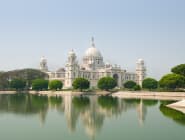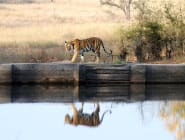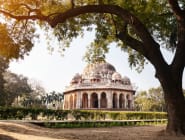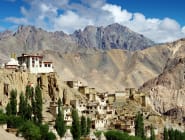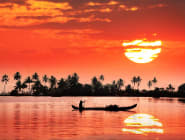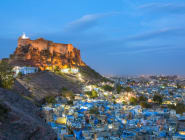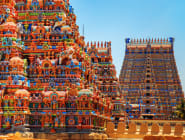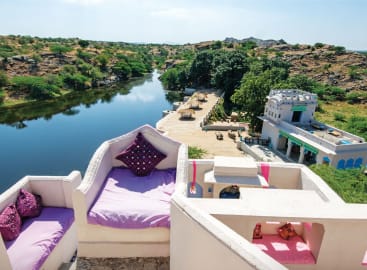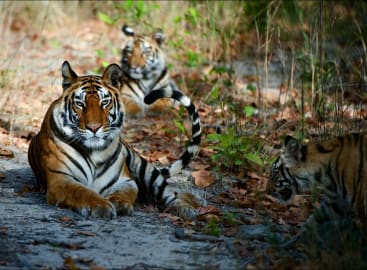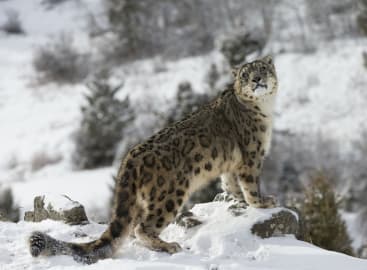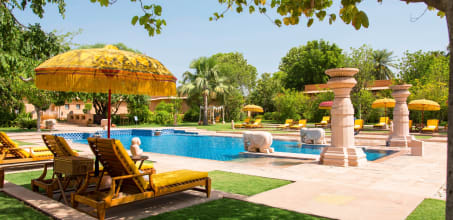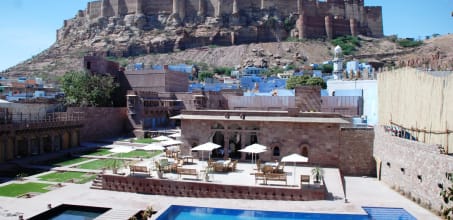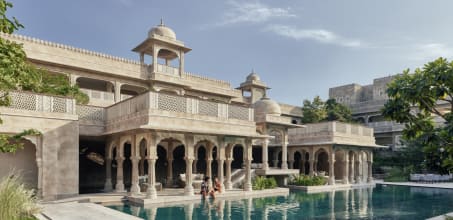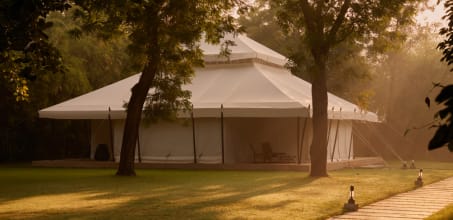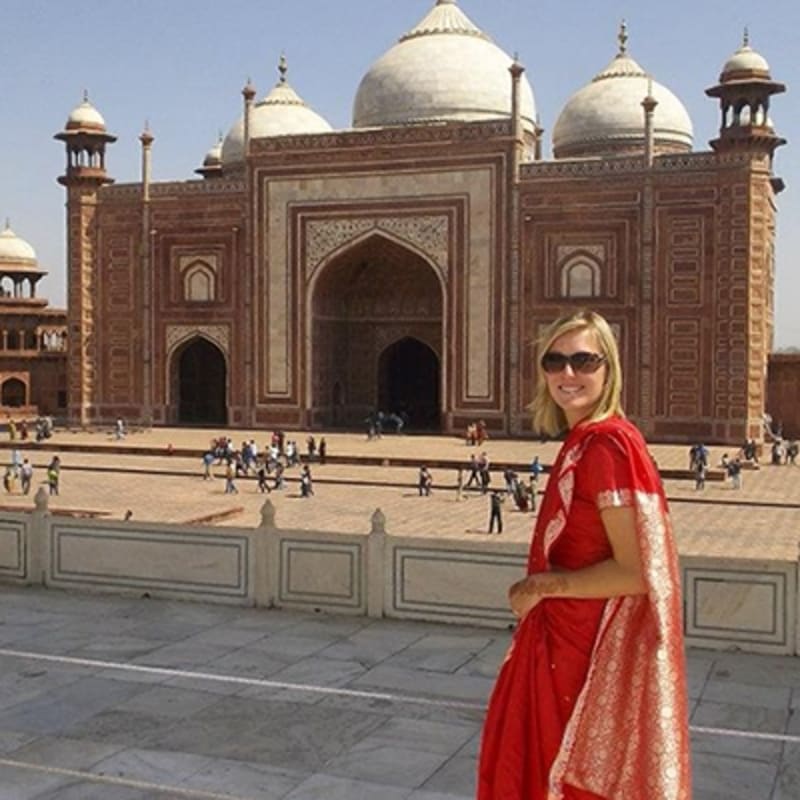Luxury India Holidays 2024/2025
From the high Himalayas to the backwaters of Kerala, India offers spectacular natural beauty in every shape and form, ensuring a luxury holiday to India is something you will not forget.
- Bespoke tailor-made holidays
- Around-the-clock support from our team of travel specialists
- A carefully curated collection of India’s most opulent hotels
- Unique experiences led by trusted private guides

India cannot be easily described or summed up. It's a beautiful mix of people and places, a patchwork quilt of a thousand polarised traditions and cultures brought together into one colourful expression.
A luxury holiday in India is something that will exceed your expectations. Explore India's rural heartlands to see the Royal Bengal Tiger and sample India's authentic village life. Watch history come to life in the remaining colonial and Mughal architecture, as well as the palaces of Rajasthan. Whether you are searching for your perfect honeymoon, want an in-depth luxury cultural tour, or a family wanting to create life-changing memories on a family adventure, we'll tailor a private tour that is just right for you.
Everything we do is customised - our itinerary suggestions are simply starting points to get the ideas flowing, as we always start with a blank piece of paper and build your ideal journey from there. We use the very best staff in India, from expert private guides to amazing drivers using the best vehicles, ensuring your holiday to India runs seamlessly.
Between the team at Scott Dunn, we have spent many years living, working and travelling through India. India is a place where specialist knowledge of the destination is essential when planning a tour to the subcontinent, and that's where Scott Dunn comes in. We love India, and we simply want you to love it too.
Holiday Destinations in India
Top India Luxury Holidays
We’ve travelled the length and breadth of India and tested every possible route to enable us to curate itineraries that work absolutely seamlessly. Taking in the country’s many highlights at just the right pace – our India tour ideas are packed with unique experiences and handpicked hotels, delivering unforgettable travel moments.
Top Luxury Hotels in India
Our specialists consistently review countless luxury hotels in India so that we can recommend only the very best ones to match your preferences. Whether you want to stay at the hottest property in the area or are looking for somewhere with rustic charm, our handpicked selection of hotels has every angle covered for your holiday to India.
Meet Our Expert on Luxury Holidays to India
What our Guests Have Said
Key information about India
- Best time to visit: October to March
- Flight time: around 8 hours and 20 minutes
- Time difference: +5.5 hours GMT
- Currency: Indian rupee
FAQs about our India luxury holidays
-
The best time to go on holiday to India is from October to March when the weather tends to be warmer and drier – without being too hot. However, it’s important to note that during December and January, certain regions like Rajasthan will experience cooler weather and increased chances of fog.
For shoulder seasons and excellent value for money, April to May is an excellent time to visit, although humidity increases along with the chance for thunderstorms.
If you’re determined to travel between June through September, we recommend keeping to the foothills of the Himalayas, avoiding the monsoon season currently happening in India’s other regions.
Visit our best time to visit India page to learn more about India’s climate and seasonal highlights.
-
India is primarily a culture-focused holiday, so expect a lot of historical buildings and markets, incredible food tours and native wildlife.
Get involved in traditional ceremonies, explore cities on privately guided walking tours, and hike India’s countryside while immersing yourself in village life. These are just a few of the activities you can expect to do on a luxury holiday in India.
Check out the rest of the unique experiences we offer on our holidays.
-
Depending on where you are travelling between, we recommend transferring by private car, train (if the route allows) or internal flights.
For our guests who are travelling around Rajasthan, we usually arrange everything overland so they keep the same driver and just pick up different guides in each location. To get a glimpse at how it works, this itinerary is all overland until the final stop where we would then fly guests back to Delhi to fly back to their home destination.
-
Luxury India holidays are suitable for families, but ideally for those with older children. Not only are the tours here more culturally focused - meaning less to keep little ones engaged - but the cuisine and accommodation aren’t necessarily set up to support the travel of young or infant children.
That said, India holidays make for some of the most memorable family trips. With a culture so vibrant and unique, it’s one of those destinations that will have you and your loved ones gawking in awe at all that surrounds you, and eagerly talking late into the night about what’s to come.
To get an idea of family holidays in India, here’s our sample family itinerary.
-
Absolutely! Our travel specialists are always on hand to create your perfect honeymoon in India.
India exudes romance and curiosity, and that’s not only because it has one of the world's most romantic monuments. From lush beaches and intrepid safaris to gorgeous sites in Rajasthan, a honeymoon in India doesn’t just tick off a bucket-list destination, it offers a taste of so many different types of holidays that you’ll get to make the most of this once-in-a-lifetime occasion.
-
Guests can get to most major cities in India from the UK. There are direct flights from London to Mumbai, Delhi, Chennai and Bangalore, so plenty of options depending on where you are travelling to in India.
There are also many flight options with Emirates, Etihad, and Qatar which travel from all over the UK and stop via Dubai.
Call us on 020 3468 1971 to start planning your holiday
Why Choose Scott Dunn for your Luxury India Holiday?
Unique to You

- We listen to your travel goals and craft unique trips that are bespoke to you.
- We’re with you every step of your life’s travel journey, from honeymoons to family trips and beyond.
Seamless Service

- Global offices in the UK, US, and Singapore for 24/7 seamless service.
- We offer flexibility if your plans change so you can book with confidence and peace of mind.
Carefully Curated Collection

- We’ve curated an elevated collection of accommodation, experiences, and guides.
- Committed to fostering close global relationships to continue bringing you unique experiences.
Luxury in Every Sense

- We deliver a sense of luxury that matters most to you.
- Awarded Condé Nast Traveller’s Top Travel Specialists in the World 10 years in a row.
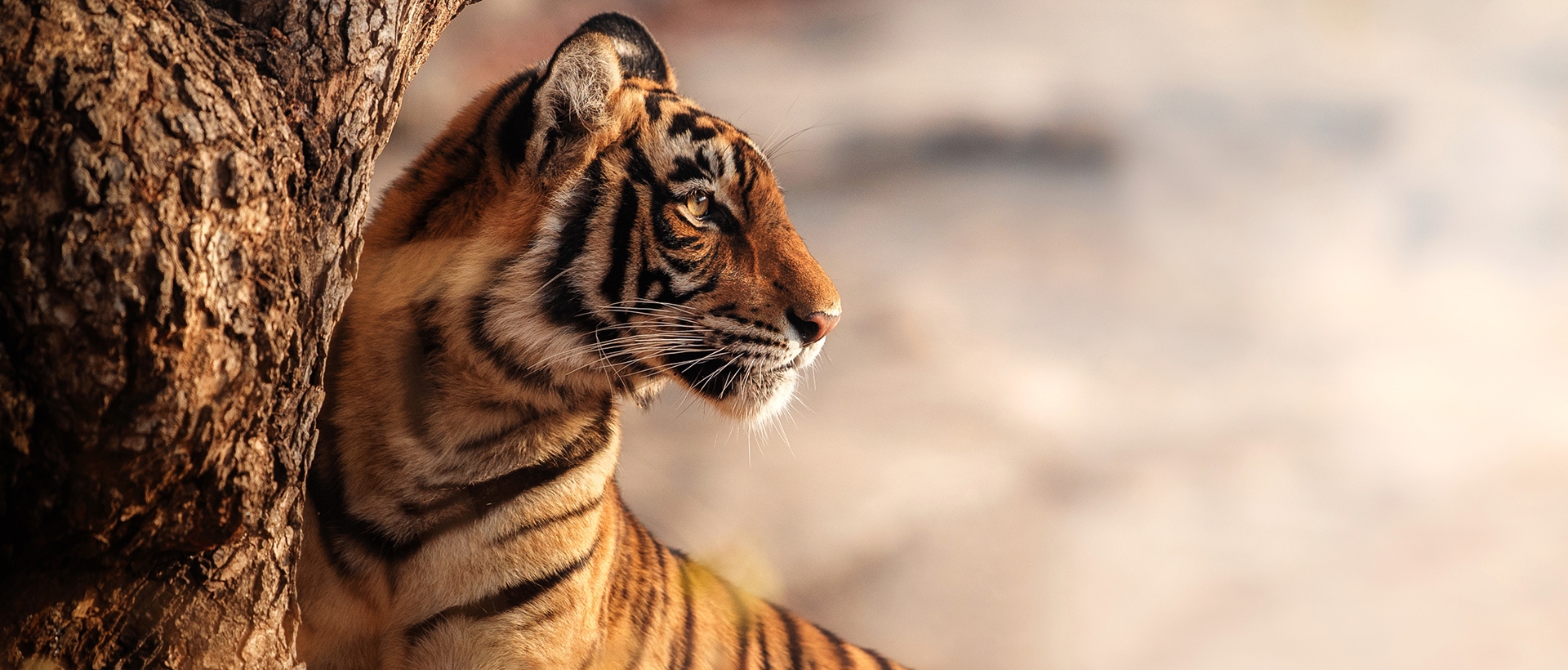
Our team of travel specialists are waiting to help you book your next adventure.
Explore Our Expert Travel Guides

This month we're going India crazy and really getting under the skin of this magical country. For many, India can be a little daunting, but you will be in safe hands with our specialists and their wealth of knowledge and experience in arranging holidays to India.

This magical country can be overwhelming with its sheer number of activities on offer, but this guide will help you plan the best spots to visit on your getaway.

At Scott Dunn, we use the best private guides, drivers and logistics to ensure the destination comes to the fore. Sit back, breathe in and let India unfold in front of you.

